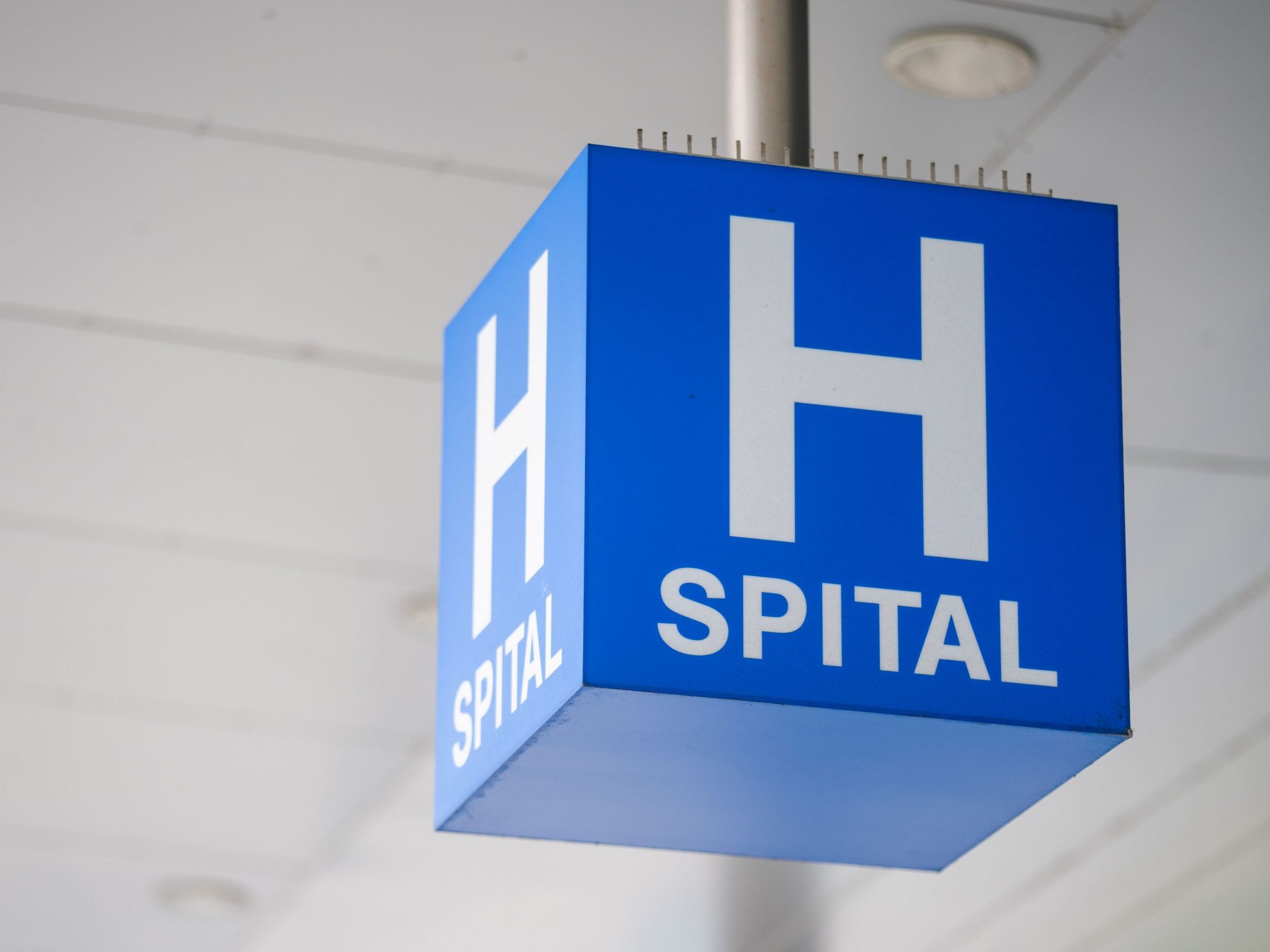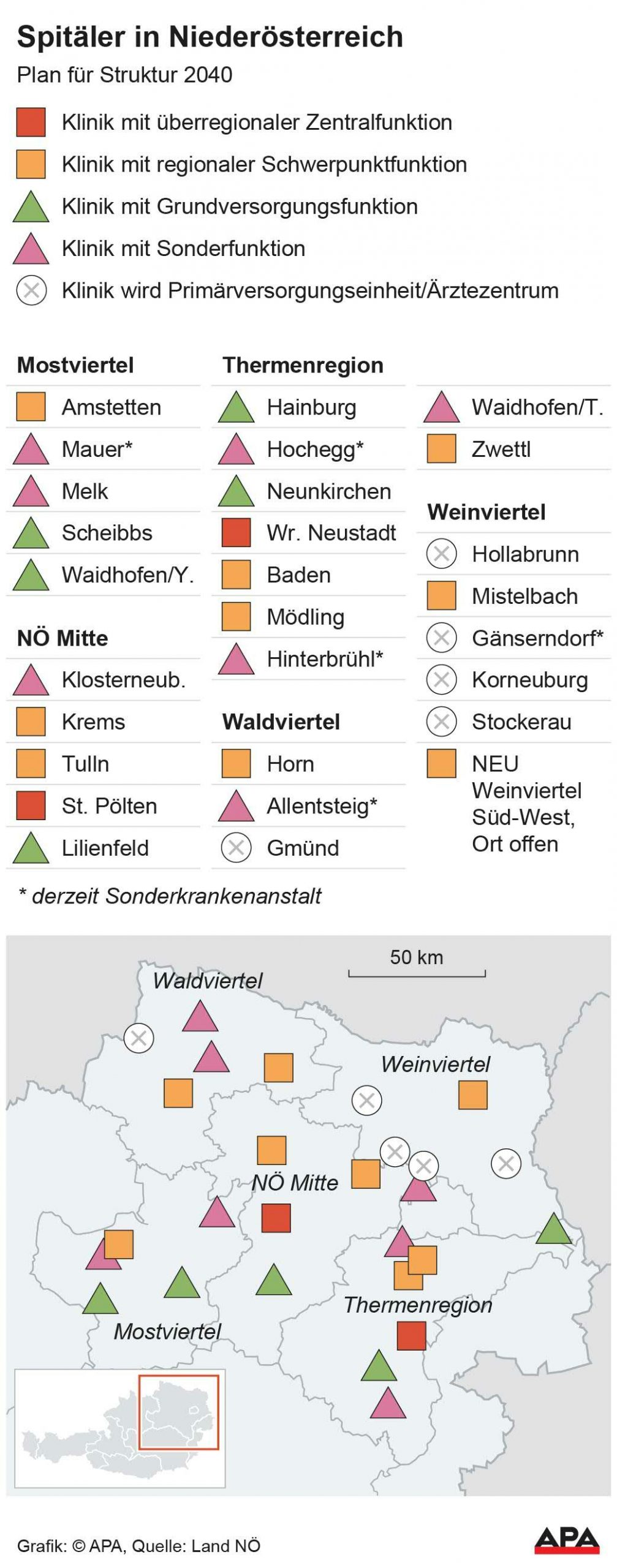NÖ: Health Pact Includes Hospital Merger

The number of emergency doctor locations will decrease from 32 to 21. Following the presentation on Monday, the concept is expected to be approved by the state government and parliament this week.
"Health Pact 2040+"
The project presented at the Landhaus ship in St. Pölten is based on several months of discussions under the working title "Health Pact 2040+". This vision includes two central clinics in the state capital and Wiener Neustadt, which will also have the highest level of specialization. Regional facilities with focus functions are to offer extended primary and acute care as well as specialized services. The locations Zwettl and Horn (both in Waldviertel), Amstetten (Mostviertel), Krems, Tulln (Central Region), Baden, Mödling (Thermal Region), and Mistelbach (Weinviertel) are predestined for this, explained Markus Klamminger, chairman of the expert committee.
There are many changes in the Weinviertel. The Weinviertel South-West Regional Hospital is to unite the facilities in Hollabrunn, Korneuburg, and Stockerau and form the "modern medical flagship" for the region, as it was stated. Additionally, it will also become a hospital with regional focus functions. A location commission is to advise on the most suitable site. Until realization - a time horizon of 15 years is expected - the existing three facilities are to cooperate more closely. Also in the Weinviertel, a primary care unit is to be established at the site of the Medical Center Gänserndorf.

In Gmünd, a new health clinic with a primary care unit and specialist medical center is being built. A total investment of up to 120 million euros is planned, with 30 million euros in a first phase by 2027. The new Gmünd health clinic is to be directly connected to the already existing cross-border health center Healthacross MED Gmünd.
Three previous acute hospitals will become clinics with special functions. In Klosterneuburg (Tulln district) and Waidhofen an der Thaya, a center for modern geriatric medicine will be established or expanded, and the Melk hospital will be further developed into a "beacon of care and geriatric medicine." Operating room capacities are to be expanded, while obstetric services are to be consolidated in Amstetten.
Connection of Emergency Doctor Locations to Clinics
Of the 21 planned future emergency doctor locations, 15 will be connected to hospitals, which is intended to alleviate the personnel situation. Six will be independent bases. Additionally, the number of Acute-Community-Nurse locations will be expanded from six to ten, emphasized Christian Fohringer, Managing Director of Notruf NÖ. 86 RTW-C emergency vehicles or emergency teams with paramedics and, if necessary, tele-emergency doctors will guarantee care. The first responder system - where voluntary first responders are also alerted - will also be expanded. A separate project will be set up to implement the "quite large reform," Fohringer emphasized.
Politically, the pact is expected to gain binding status this week. A decision in the state government meeting is planned for (tomorrow) Tuesday, and the topic will be addressed in the state parliament on Thursday. The concept developed was already approved on Monday by ÖVP State Councilor Ludwig Schleritzko, who is responsible for the hospitals. He emphasized that they "also politically support the health plan." Reference was once again made to demographic change and the shortage of skilled workers. According to Schleritzko, there will be "smooth transitions," and all employees have a job guarantee from the NÖ State Health Agency; even more employees will be needed in the future. "The health facilities guarantee round-the-clock primary and emergency care. Anytime and anywhere," the state councilor also noted. Now a pact becomes a plan, it is an "investment package for the best possible future care of the people." Some measures "will be implemented promptly," it was announced, "others need more time, more space, and new structures."
In any case, the construction will be based on a "comprehensive, modern, and efficient health infrastructure," added State Councilor Christoph Luisser (FPÖ). In addition, there will be "more flexibility to best respond to regional differences, better networking between hospitals, specialists, and general practitioners, as well as a targeted strengthening of care and support services." The approach is "bold, innovative, and above all, future-oriented." By the end of the year, a comprehensive supply structure for Lower Austria is to be established within the framework of the Regional Health Structure Plan. From the perspective of State Councilor Christiane Teschl-Hofmeister (ÖVP), the expertise of care is also present in the health pact. The stationary and mobile sectors will need to be expanded in the future, and the topic of digitalization is also important.
"We have found a compromise," emphasized SPÖ state party leader State Councilor Sven Hergovich, who temporarily holds the health agendas in the state government after the departure of his party colleague Ulrike Königsberger-Ludwig to the federal level. Based on an expert paper leaked last year, he had repeatedly criticized proposals to close hospitals in the past. Hergovich expressed satisfaction with the current pact, which was developed by around 50 experts. Decisive steps have been achieved from the SPÖ's perspective. Mentioned here were, for example, comprehensive primary, acute, and emergency care, the expansion of child and adolescent psychiatry, and a planned significant reduction in waiting times for surgery and doctor appointments. "My approval depends on these promised improvements being implemented."
Experts Developed "Health Pact 2040+"
The "Health Pact 2040+" was developed since last year by national and international experts based on seven guiding principles, outlined project leader Volker Knestel. Elisabeth Bräutigam, Head of Medicine and Care at the NÖ State Health Agency, identified, among other things, the need for new professional groups and telemedicine.
(APA/Red)
This article has been automatically translated, read the original article here.





